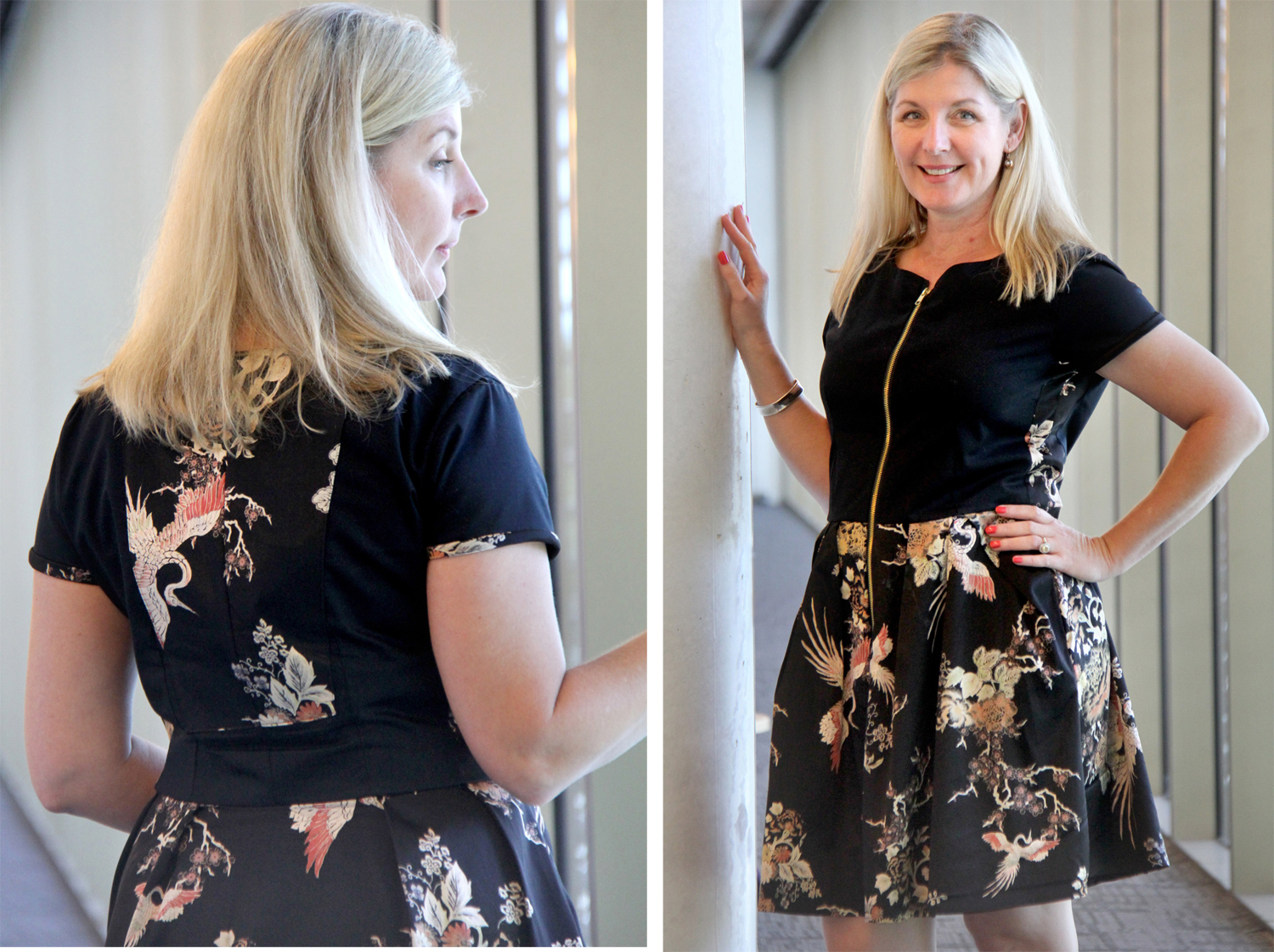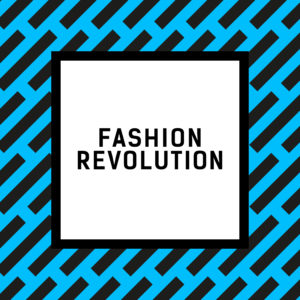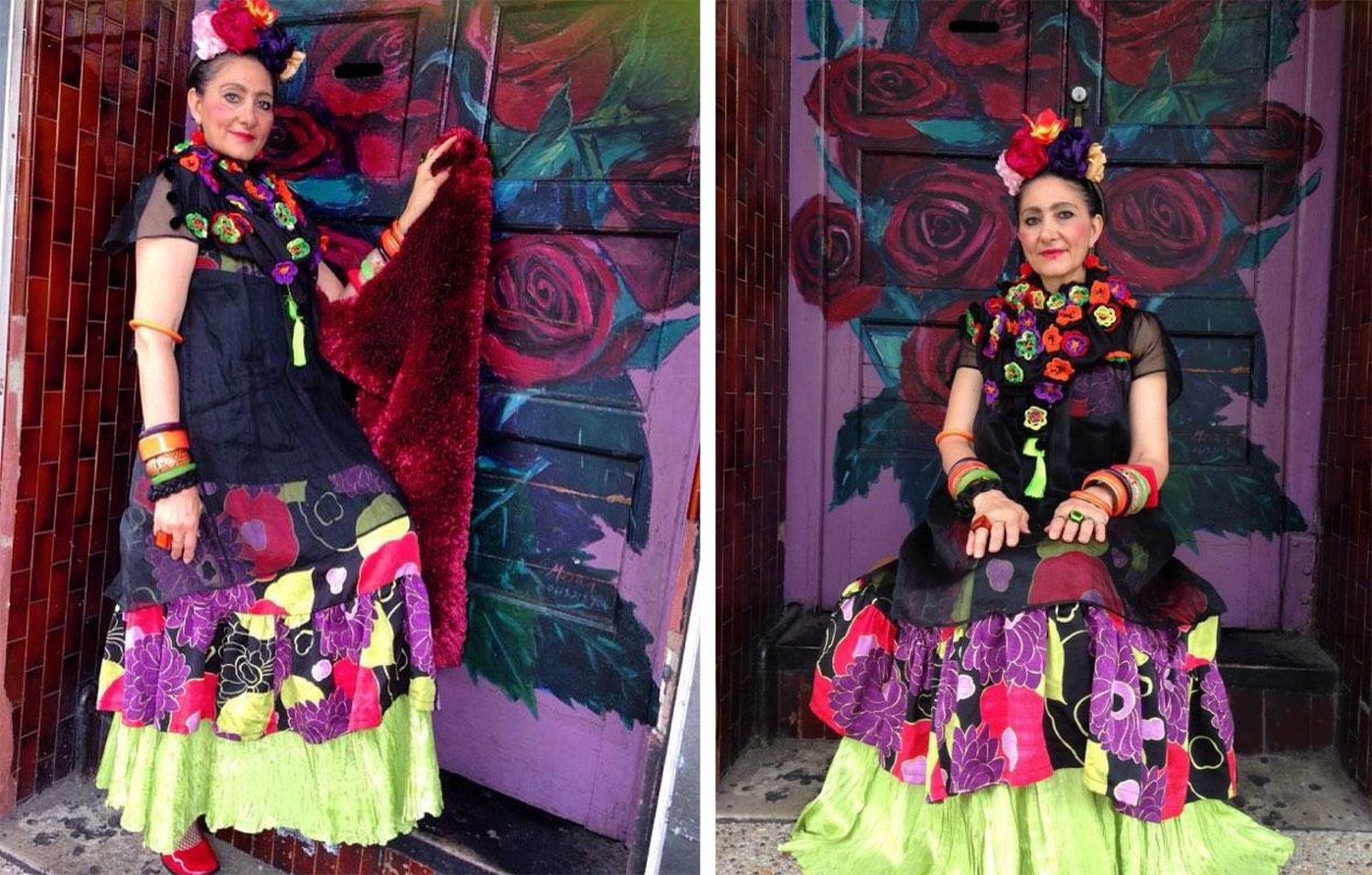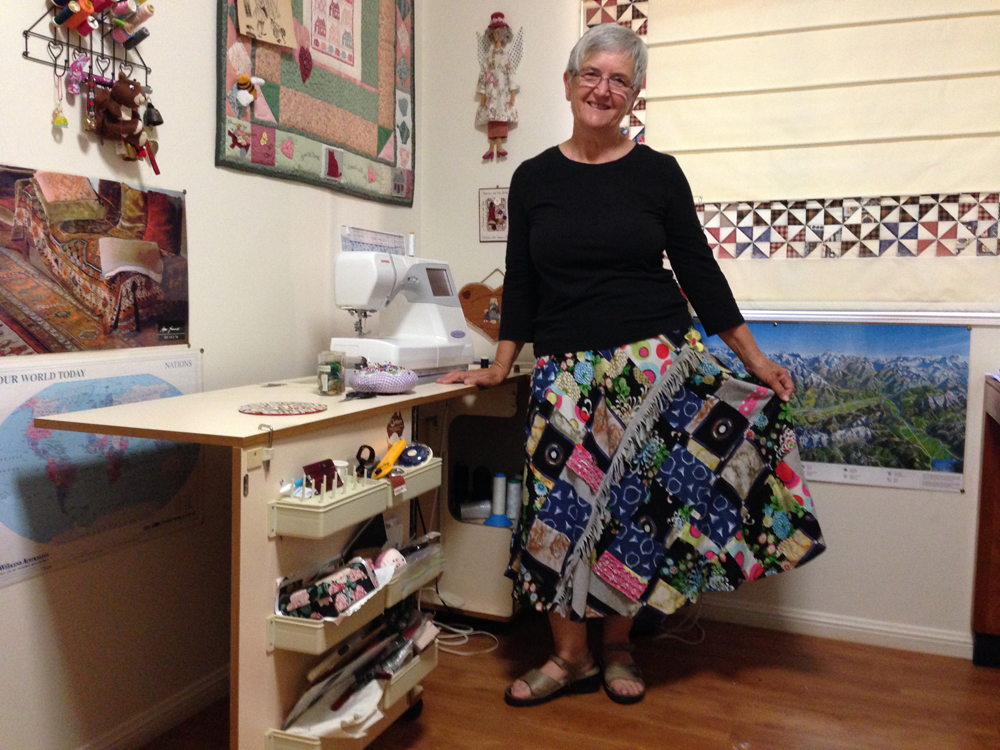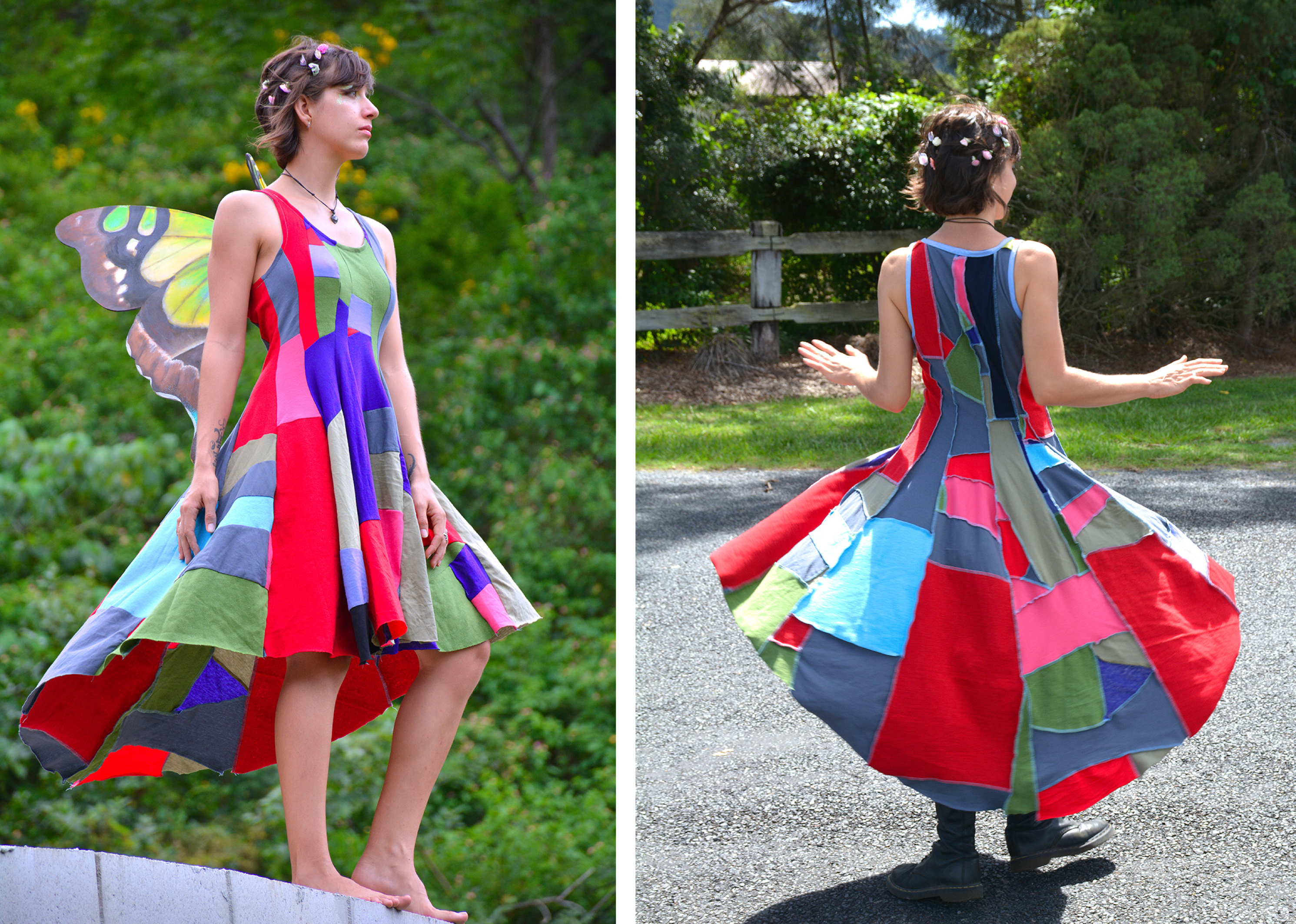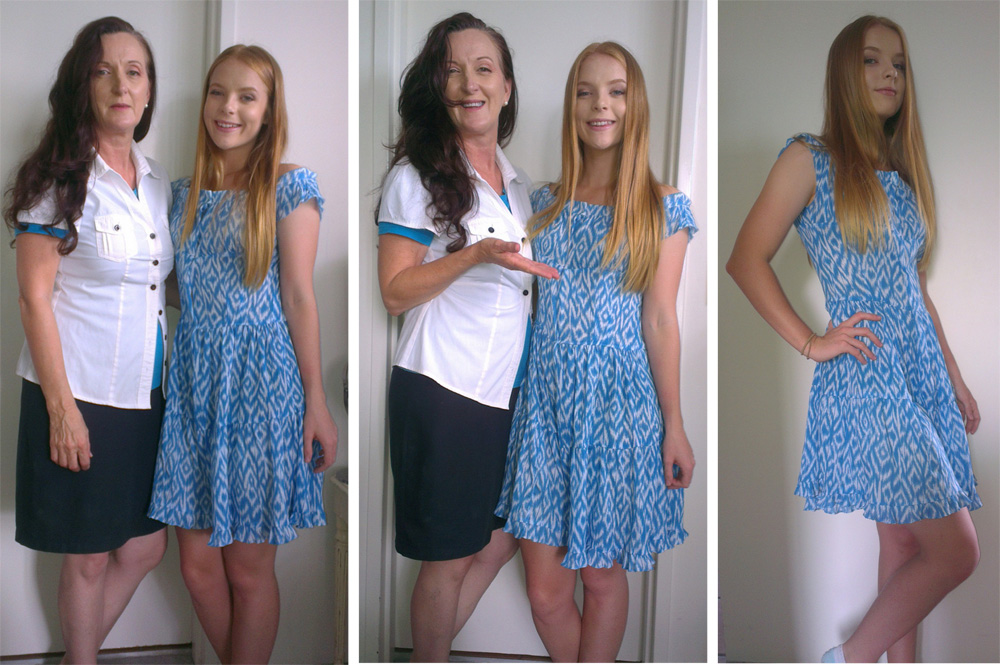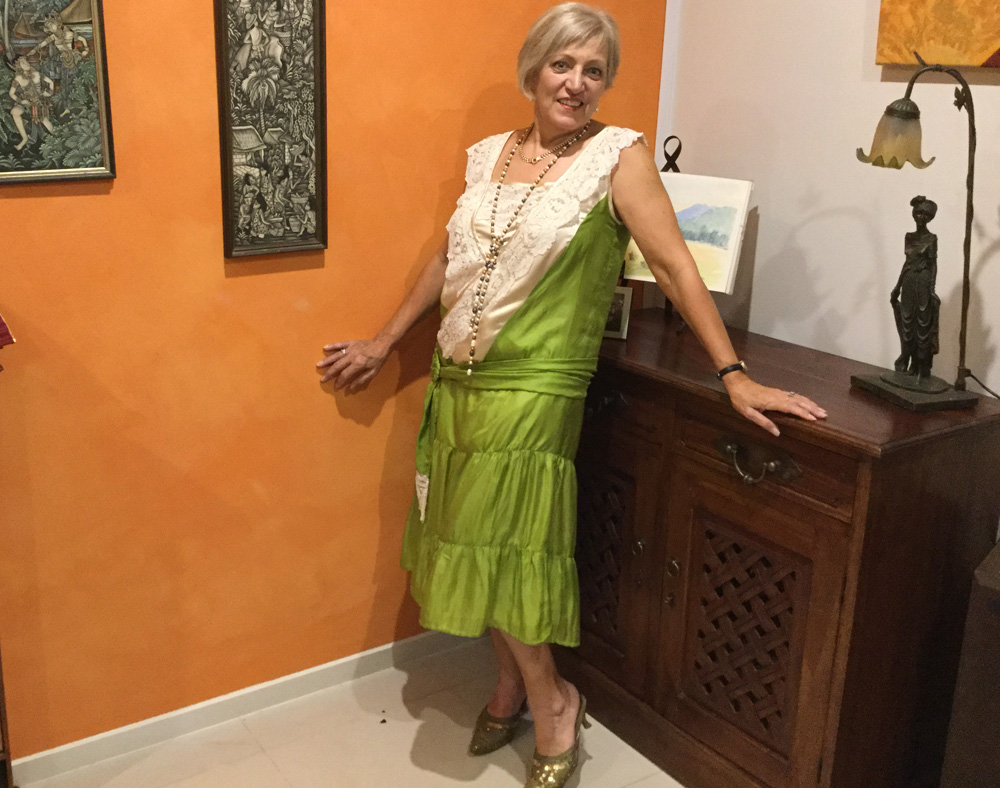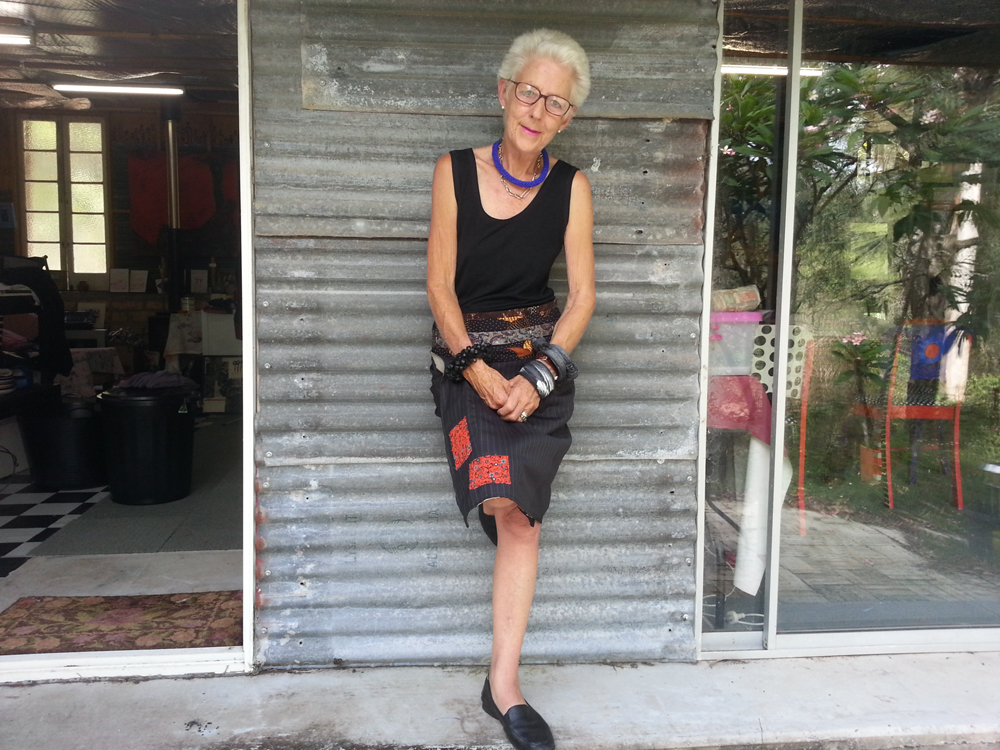When ABC Online journalist Kerri Harris wrote a story about The Slow Clothing Project it made sense to ask if she wanted to be involved. She said yes, and here’s her garment story!
Kerri loves creating things and gets a kick out of saying ‘actually, I made it’ when positive comments flow from what she’s wearing. She makes many outfits for work at the ABC Southbank studios, including skirts and dresses, tops and jackets.
“I learned to sew in Year 8 at my local high school. My mum was really good at sewing and often had the machine out fixing things. She also had a cupboard full of patterns and spare fabric, which always intrigued me. When I started working, it was economical to make my own clothes. From there, I taught myself new techniques until I could fairly confidently sew tailored suits to wear in the office,” Kerri said.
